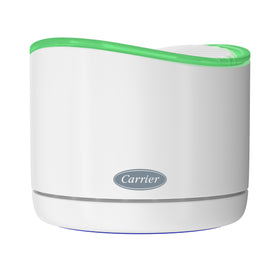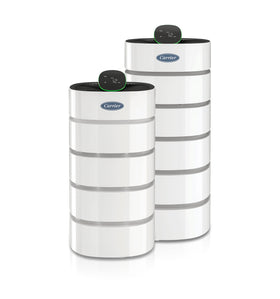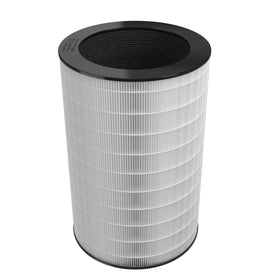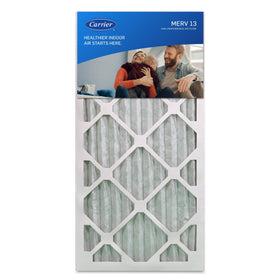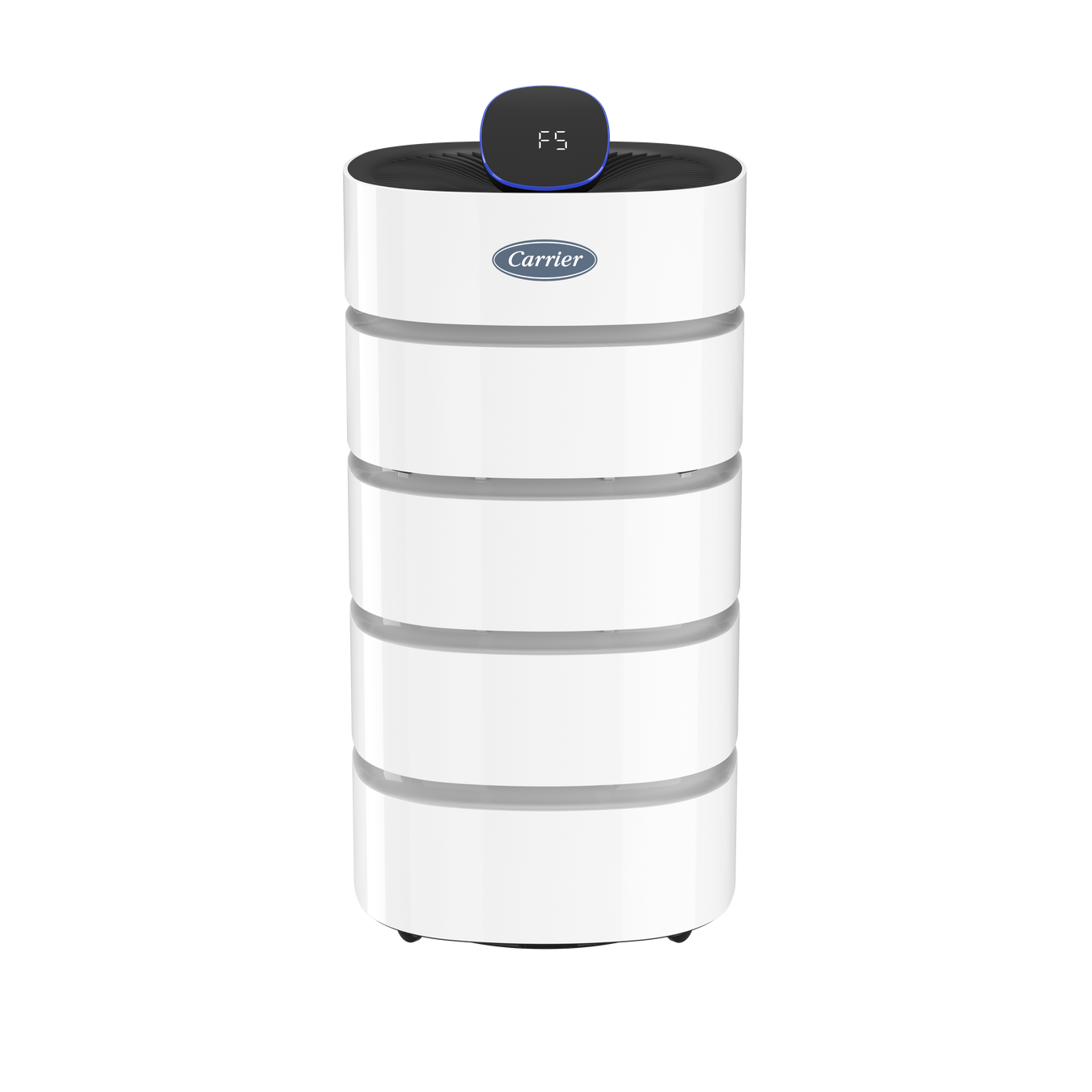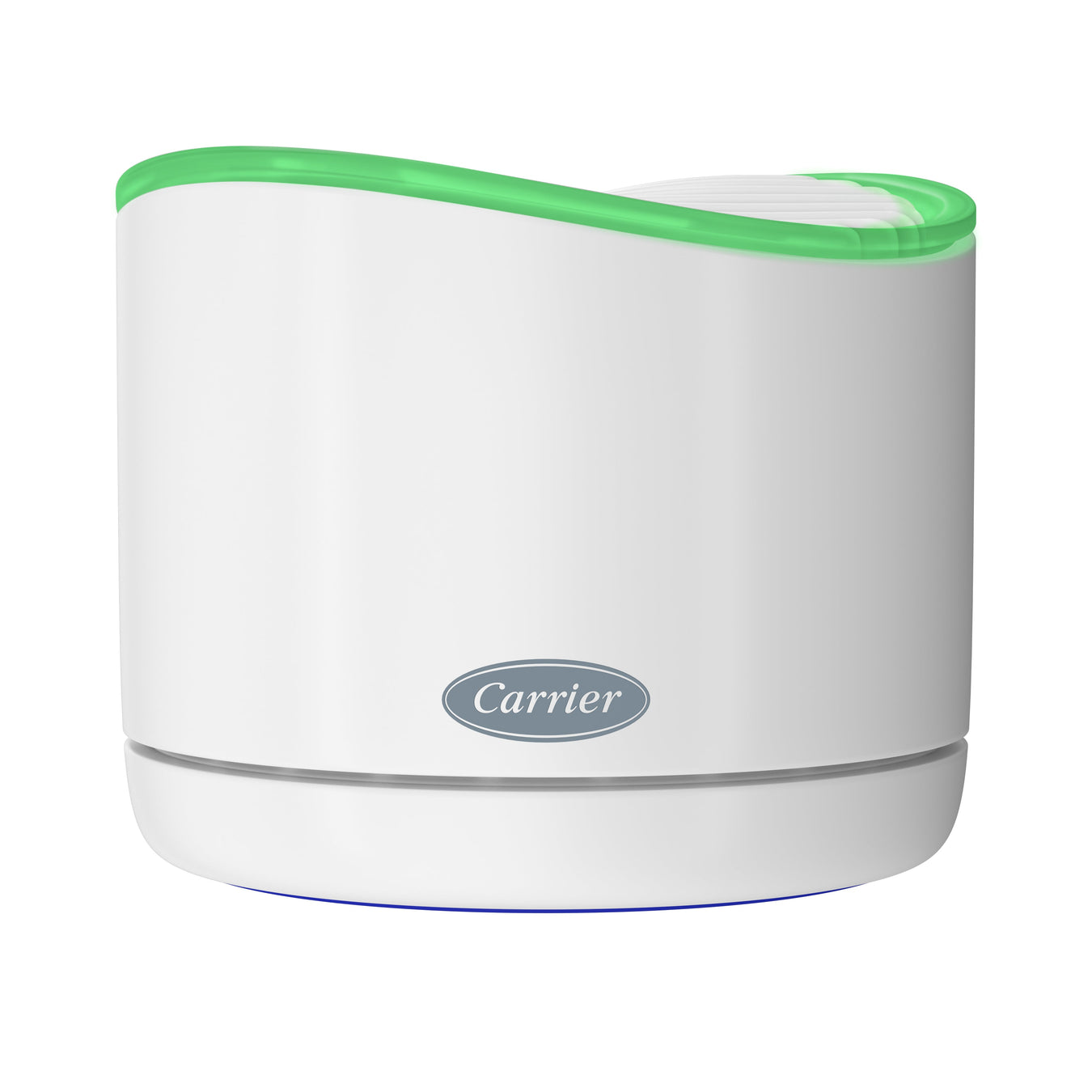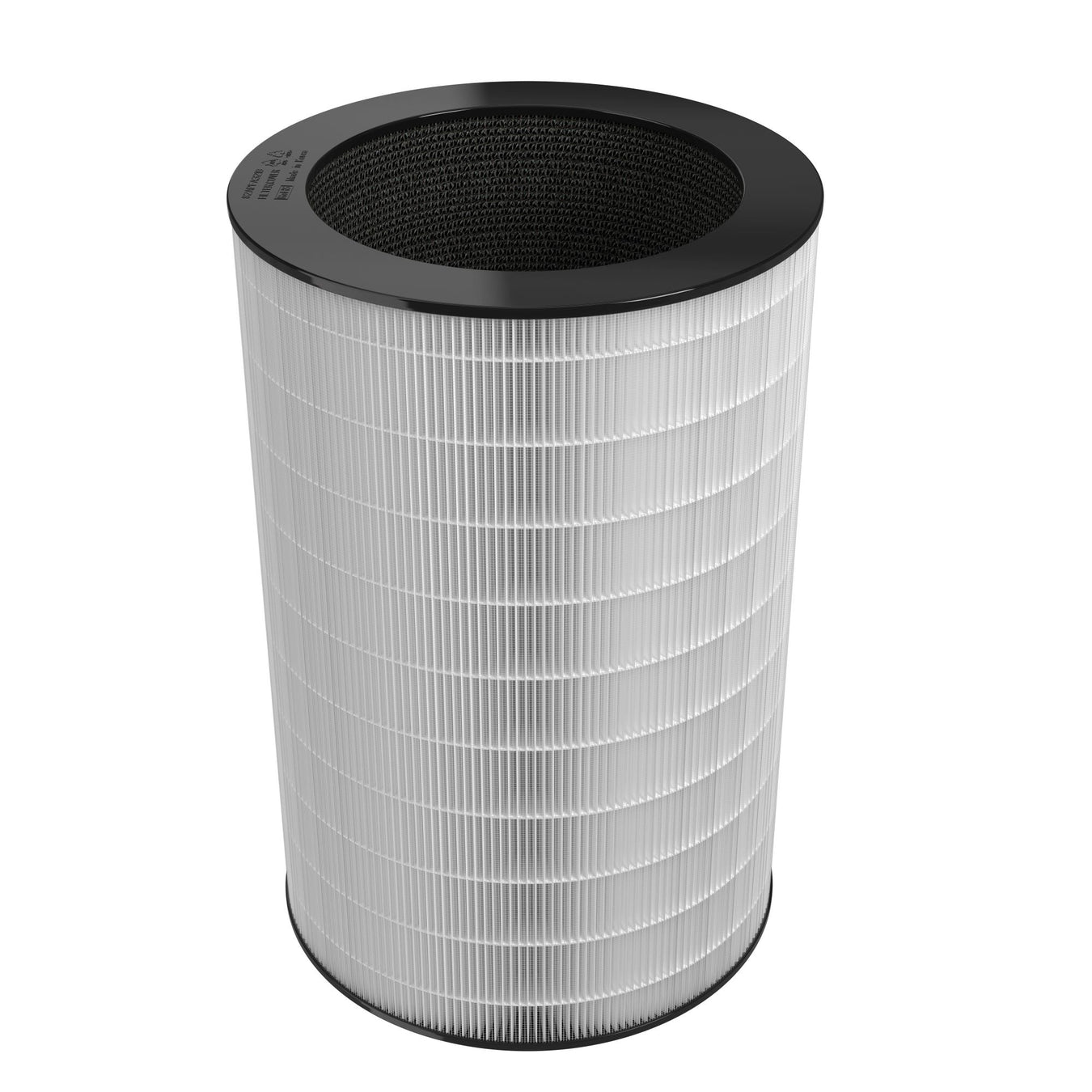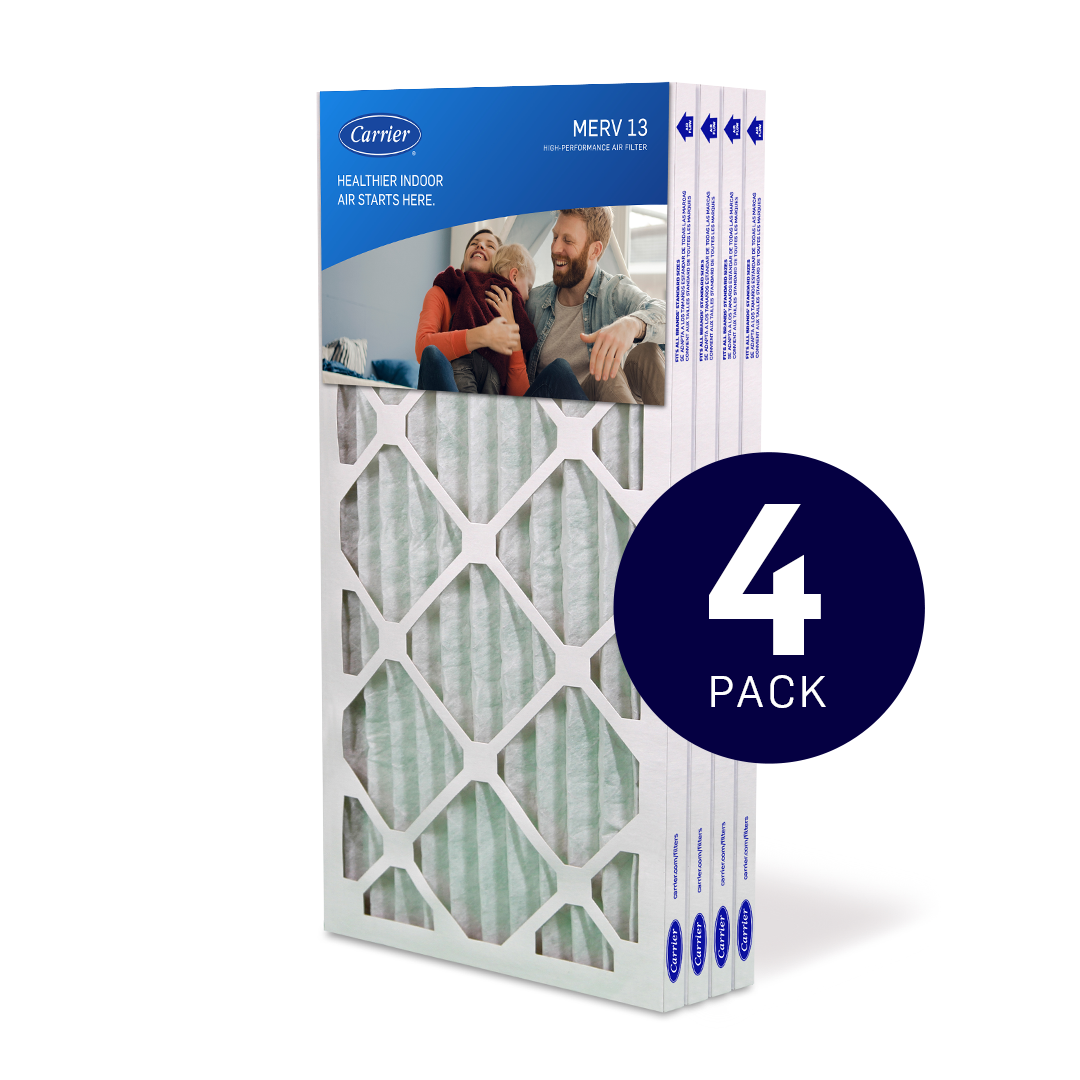
All About Air Filters
Your central AC system keeps you cool and comfortable every summer by moving a lot of air, both inside and outside your home and air conditioner maintenance is important. Inside your home, there is an air handler unit that draws indoor air across the evaporator coil where the heat and moisture is extracted, leaving the indoor air cooler and more comfortable. At the same time, the cool air is re-circulated back to your home. Your air conditioner system’s air filter is typically located inside the air handler unit or just outside the cabinet in the ductwork. It traps airborne pollutants from the air coming into the system which can help keep your cooling system components cleaner and maintain improved quality of the air you and your family breathe.
To help protect your air conditioner’s lifespan, and improve comfort, it’s important to clean or replace your HVAC filter regularly. Here’s why:
- Energy efficiency: A dirty or clogged air filter can restrict airflow through the system. Because the system will have to work harder to maintain your comfort, it uses more electricity, which can increase your energy bills. According to the Department of Energy, replacing a dirty, clogged filter can increase your system’s efficiency by 5 – 15%.1
- Comfort: Knowing how often to change air filters can affect your comfort. A neglected, dirty air filter can cause the heating and air conditioning system to struggle to keep you comfortable.
- System reliability: Because a clogged, dirty filter can make your fan motors and other components work harder, ignoring routine filter maintenance can shorten the life of your HVAC system.
Now that we’ve established the importance of filter maintenance, we should also point out that answering the question “How often should I change my air filter?” does not have a one-size-fits-all solution. Some should be replaced every 30 to 60 days. Others might last 6 months to a year.
The answer depends on factors such as how often you use the system, the type of filter, whether there are any pets in the home, and your personal habits such as having smokers in the house, use of a wood-burning fireplace, and more. For your comfort and well-being, and potentially to help save you money in the long run, regular filter inspections and replacement should be a part of your routine air conditioner maintenance.
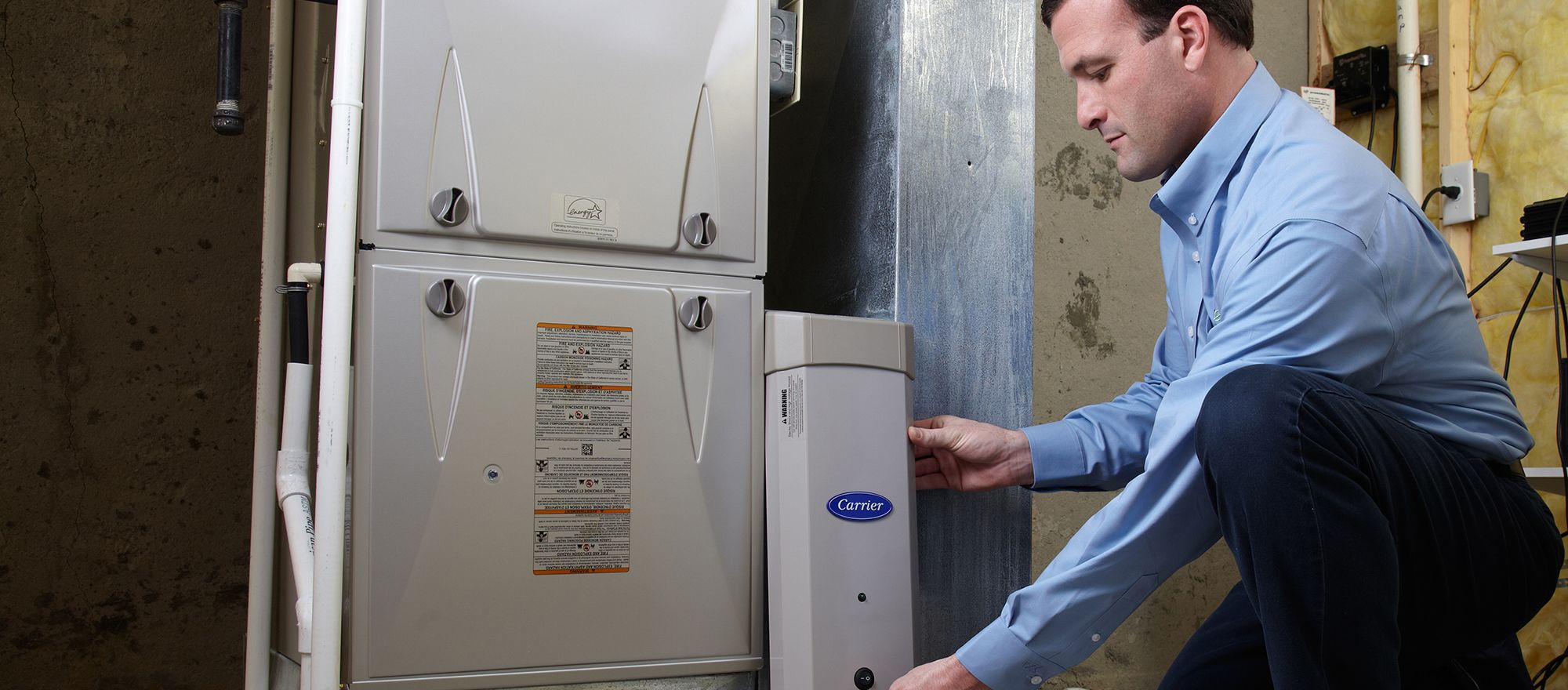
TYPES OF AIR FILTERS
The general recommendation for how often to change air filters can range from every 30 days to every year. Two of the determining factors for a filter’s lifespan are the type and quality of the filter that is being used.
- Fiberglass filter: Fiberglass filters are typically the least expensive option. They are usually about 1” thick and provide basic level filtration. They are disposable filters that should be checked and probably changed about every 30 days.
- Polyester / pleated filters: Pleated filters are available in different widths, but all of them are typically more effective at filtering airborne pollutants than standard fiberglass. 4-inch wide pleated filters supply much improved filtration compared to standard fiberglass types and even 1-inch pleated versions. These filters also have much higher surface area and can potentially be left in place between 3 months and a full year before cleaning or replacing.
- Washable air filters: Washable filters are less common. They actually become more effective at filtering as airborne particles build up on their surface. Instead of replacing, these filters are removed, cleaned, and then placed back into the system.
For each of the above types of filters, you can compare their effectiveness by checking their MERV rating. MERV is an acronym for Minimum Efficiency Reporting Value and is a rating of the filter’s ability to trap airborne particles as well as its ability to allow proper airflow. MERV ratings can be between 1 and 16, with 16 providing the best filtration.
FACTORS THAT IMPACT HOW OFTEN TO REPLACE THE AIR FILTER
The lifespan of an air filter is also impacted by the occupants of the home and the characteristics of the home itself. Because an air filter is one of the home’s first lines of defense against pollutants and allergens, it’s important to have a feel for how your home and your actions can affect the timeline for replacing the filter.
QUALITY OF THE AIR
Your activities and your home’s location both can have an effect on indoor air quality. Some examples that can reduce indoor air quality include:
- Smoking in the home
- Burning scented candles
- Using a wood-burning fireplace or stove
- Cooking
- Use of personal care products and cleaning agents
- Location near new construction
- Poor outdoor air quality/smog
If one or more of the above apply to your home, a good answer to “how often to replace air filter” is “at least once every 30 days”.
ASTHMA OR ALLERGIES
If you have allergy sufferers in the home, or individuals with asthma, you know that these people can be more sensitive to airborne particles such as dust mites, pollen and mold spores. Selecting a good quality filter with 12 – 16 MERV to remove a high percentage of offending particulates. Be sure to check your filter at a minimum of once per month.
PETS IN THE HOME
With animals in the home, the question of how often to change air filters will depend upon a number of factors, including the number, size, and hair length of the animal(s). Pet dander and hair increases the volume of airborne materials that an air filter must capture. Pets also can bring additional bacteria, viruses, insects, dirt and dust into the home. Frequency of filter checks and how often to replace your air filter shouldn’t vary too much if you have just one pet living in the home. If this is the case, follow the recommendations provided by the filter manufacturer. With multiple pets in the home, we recommend checking the filter with more frequency, at a minimum of once every 30 days.
SIZE OF THE HOME
The HVAC system in a larger home will circulate higher volumes of air, and therefore trap higher volumes of airborne particles in its filter. This means that air filters in larger homes should be checked, cleaned and replaced with more frequency than those in smaller homes.
HOW OFTEN YOU USE THE UNIT
The more often a heating and cooling system is used, the more air that will be pumped through the air filter, and the more pollutants that will be stirred up and trapped. If the home is in a moderate climate and the air conditioner is used infrequently, the air filter will not need to be changed as often. The same is true for vacation homes. An air filter in a vacation home can last much longer than the average residential home due to its infrequent use.
The opposite is true for air conditioners that are used more than average or if the customer utilizes continuous fan mode. In the heat of summer in Florida, when the air conditioner is running all the time, the filter will likely need to be changed more often than the recommended amount.
Ultimately, the decision on how often to check, clean or replace your HVAC system’s air filter is up to you. Understanding all of the variables involved will help you make a good choice.
HOW OFTEN YOU SHOULD CHANGE AIR CONDITIONER FILTERS
How often you change your air filter will vary based on the type of filter you have. For example, a basic, 1-inch air filter will most likely need to be replaced more often than a larger 4-inch filter. You should follow the filter manufacturer’s recommendations, but a good rule of thumb is to inspect your AC filter at least once every 2-3 months. Additional factors that can affect the timeline of how often you change your filter regularly include:
- Thermostat settings: If you tend to enjoy cooler settings in summer, your system will run more often, which may decrease time between filter changes. If you set the thermostat back to save energy, you’ll run the system less and potentially increase time between filter changes.
- Poor system installation: An undersized system will run longer and filters will likely collect more pollutants. Poorly installed ductwork may invite more airborne pollutants into the system as well. Both of these examples can potentially reduce the time between filter changes.
- Pets: If you are a pet owner, the number, size and type of animals in your home might affect timing between filter changes. Larger animals or longer-haired animals that shed more will shorten the time between filter changes.
- Quality/age of home: Older homes or poorly sealed homes tend to draw more dirt, dust and other airborne pollutants from outside. Especially in areas with air pollution issues, you will likely need to inspect and replace your filter more often.
As filter inspections become a part of your routine, you might want to purchase replacement filters in advance and have a clean filter available in case an inspection indicates it’s time for a change. Make sure to purchase the right air filter size.
HOW TO REPLACE AIR CONDITIONER FILTERS
- Turn off the power to your air conditioning system—at the thermostat, breaker box, or shutoff switch on or near the indoor unit (it often looks like a light switch).
- Locate your indoor air handler unit—typically in a basement, garage, attic, or furnace/utility closet.
- Open the filter cabinet door, along the sides, top, or bottom of the blower cabinet. The filter may be horizontal or vertical, depending on the orientation of the air handler. In some cases, especially on older models, the filter is found inside the blower cabinet; or in an apartment or condo unit, the filter may be located in an in-wall return air grill.
- Determine the airflow direction, which is often indicated with arrows on the filter itself, to ensure proper installation of the new or cleaned filter.
- Remove the filter and inspect it for the buildup of dust, dirt, and debris.
- Decide whether to clean or replace the filter. If it’s only mildly dirty, and you can see light through the filter, cleaning may be the best option. If it's caked in dirt, it needs replacement. If the buildup is somewhere in between, use the manufacturer's guidelines and your own judgment and knowledge of your system to choose cleaning or replacement.
- To clean—follow the manufacturer's recommendations; many air filters can be gently cleaned with a vacuum cleaner nozzle attachment.
- To replace—if you do not already have a replacement filter, measure the old air filter or write down the dimensions printed on the casing before you throw it away.
- Carefully slide the new or cleaned air filter back into the housing, with the airflow arrows pointing in the correct direction.
- Secure the cabinet or panel cover. Restore power and turn on the unit.
FIND AN AIR CONDITIONER MAINTENANCE PROFESSIONAL NEAR YOU
If you would like help with your air conditioner maintenance, you can always schedule an appointment. Your local Carrier HVAC dealer offers the expertise needed to properly diagnose and service your AC system.
Learn more about air filters on our air filters educational content page.
1 See Department of Energy

